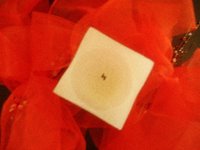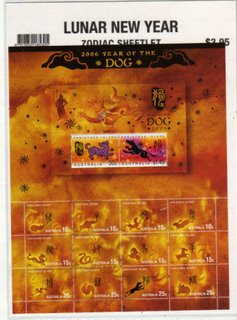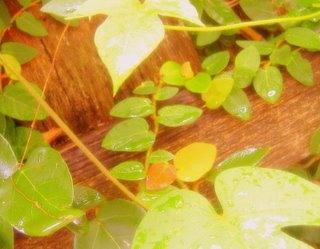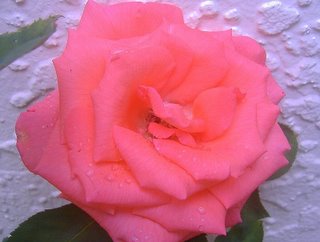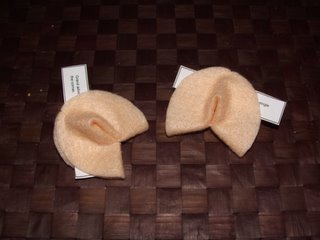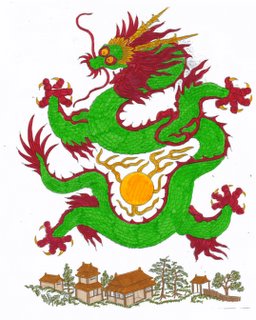Chinese New Year
The Chinese New Year is celebrated as a spring festival in commemoration of the legend of Nia. Nia was supposed to be a huge wild animal which terrified towns and villages on winter evenings when it came looking for food. The people were frightened as they could think of no way of scaring the monster away.
Monday, January 30, 2006
At the beginning of the year of the dog
Take me
to a far country
up the great river
into the ancient places
Take me
to a strong people
that I may learn the art
of survival
Teach me
to travel without luggage
so that I may learn a language
that lives for five thousand years
and still can be heard
A Chinese Alley
While relaxing on board the junk, on my way to the Isle of Ancestors, I thought about a place I visited so long ago. A place and a picture that is etched in my memory.
A Chinese Alley
While reflecting on this Chinese New Year, the Year of the Dog, I recall, when living in San Francisco, how I used to prowl around Chinatown with a camera. Being, at that time, far less security conscious than I am now, I would seek out the alleys and odd corners—places that did not attract the tourists.
I did not see a soul that evening as I entered and prowled an alley where, when I stopped to listen, voices speaking in Chinese could be heard through open doors. I was a predator … my prey: images of a culture—a foreign culture embedded within this beautiful American city, in which I lived at the time.
I remember one image, one evening in particular. I entered an alley, one that would be typically thought of as a perfect setting for Tong War activity. Mind you, this was in the mid nineteen fifties, a long time ago. The blackened, uneven brick walls of buildings towered on each side, coming together at the top to keep the sunlight or moonlight at bay. A faded wooden sign hung over one of the doors—a message to those who could read the language. I could not understand its message, but I could appreciate it because of the artistry, the design of the Chinese written language.
Later, at home, when I processed the image in black and white, I was delighted to see that I had captured the essence of the place. It was a picture I treasured and kept safely for many, many years. Unfortunately, in a recent move, a batch of my pictures disappeared, my Chinese Alley image among them. I cannot go back and recapture what I saw that evening, because even if I could physically do so, I would consider it foolhardy. Our living in such a security minded world has, in my personal opinion, strangulated our desire for small adventures as it has our larger ones. Even if I summoned up the courage to enter that alley again, I don’t believe I could ever recapture the ambience of place that I did that evening so long ago.
Looking back from this place in time, I can, even without the picture in front of me, transport myself back to that timeless alley and experience again, all its sounds and smells. It is indeed a flicker of the magic lantern of my life—a life made up of thousands upon thousands of fleeting flickers that are stored away in the filing cabinet of my mind.
I wish you all a Happy and Prosperous Chinese Year of the Dog.
Coincidentally, I saw last evening on the news where they are teaching childen to speak and to write Chinese. This is happening in some of our schools. I hope more will take it up. The children seem to be delighted and are accepting the challenges of the language with enthusiasm. What better way to bring East and West together. I envy their opportunity.
Vi
January 28, 2006
Sunday, January 29, 2006
A Tale from the Isle of Ancestors - Chinese "Gypsies"

The Hakka are called the Gypsies of China because they are migratory tribes, now scattered all over Asia and the rest of the world. Many Chinese scholars believe them to be descendents of the Han people who fled the Mongols during the Yuan dynasty.
The name Hakka means `sojourner’, and among the traits they have in common with European and Middle eastern Gypies are their fierce pride and strong belief in family.
In the 19th Century, the Hakka started to flee persecution in China and spread over the world. Hakka travelled as far as the USA and Australia where they continued to follow their own unique culture.
The women of Hakka were never subjected to restrictive Chinese customs such as foot-binding. The women were strong and self sufficient, able to work and fight along the men.
The Hakka did not live in mobile dwellings – they settled in the areas they moved to and built circular mud brick fort houses with three foot thick walls to protect themselves against the locals, who were often hostile to the sojourners. Each house would hold around 20 families, with a courtyard in the centre where they kept their livestock. The Hakka, a hard working people, built complex drainage systems so that the entire fort could be closed off and the families remain self sufficient when under siege.
The Hakka keenly observe Chinese New Year, and other festivals, practice ancestor worship, and love to sing their own complex folk songs. Song is very important to the Hakka, and they have a variety of styles of songs and singing for every ocassion. They have special dishes for Chinese New Year such as Fried Pork with fermented bean curd. In this two stage dish, the pork is first marinated, then deep fried. Then it is stewed with wild mushrooms. Like their songs, Hakka recipes are very complex.
Today, the widespread Hakka are in danger of losing their unique culture, so a website has been launched to help preserve Hakka customs and lore. The China based Hakka welcome tourists to their roundhouse villages such as Chu Xi, where 200 inhabitants all share the same surname.
One of their most popular crafts is paper umbrella that they make from oiled paper and bamboo. These are highly prized by tourists as local craftsmen can only make two a day.
The Lion Dance

It is Chinese New Year. The Year of the Dog. Students at my school get ready for their “Multicultural Show”. Today there are many different Asian groups performing. A Vietnamese fan dance. A Hmong dance. Pilipino jumping dance with the bamboo poles. And to start and finish it off is our school’s version of the Lion Dance. I hear the drums and cymbals. Bang! The lion dances proudly. Happy New Year! Gung hay fat choy!
I remember my first Chinese New Year Lion Dance. I was very small and it was very loud. The firecrackers scared me and the larger-than-life lion heads petrified me. We had gone to Chinatown with my aunt, uncle and cousins to see our first lion dance. I think I cried most of the time.
Several years later when I was in high school my friend Marilyn invited me to go with her and her family to Chinatown for the New Year’s celebrations and Lion Dance. Her family was Cantonese but welcomed me warmly to their celebration.
Chinatown was bustling with people. Old Chinese grandmothers scurrying to buy the last vegetable for their dinner. Tourists roaming the shops looking for bargains. Families wandering up and down Grant Avenue greeting friends and showing off their children. I remember we went first to the Chinese bakery my friend’s family owned and picked up a few more relatives. Then we wound around to a little side street to a restaurant probably owned by a family friend. Upstairs to the banquet hall. Large round tables with the biggest lazy susan’s I had ever seen. We sat as dish upon dish was brought to the table. Steam poured out from soups, noodles, meat and vegetable dishes, rice, and countless items I had never tasted.
We ate for what seemed like hours, loud banter and hushed murmurs. Chopsticks waving in the air to make a point. Babies crying and dishes dropping all added to the cacophony. But it was good then, warm and friendly, and I was having a ball.
Later we ventured outside among the crowds and squeezed into place to watch the famous Chinatown Lion Dancers. First we heard firecrackers, then drums and cymbals. Soon sparklers and lanterns came into view as the dancers wound their way amongst the crowd. Bang! The head reared up as the dancers held it high. Bang! Pop! The lion snaked along the street. More firecrackers and music seemed to come from all directions. The crisp night lit up with the celebration. The crowd cheered the dancers on as they gyrated to the ever changing music. Bang! Pop! We watched the procession as it wound down the street. Soon the dancers got swallowed up by the crowd and we only heard the drums and cymbals. Bang! A last firecracker near us exploded. People cheered as they wandered off to continue their Chinatown adventure. Happy New Year! Gung hay fat choy!
Saturday, January 28, 2006
Journey to the Isle of Ancestors
The Journey to the Island of Ancestors
In this meditation, you will journey to meet an ancestor. Remember that an ancestor is a person from your past, who is no longer living, who has helped shape the person you are today; an ancestor may be a predecessor from your bloodline, a previous incarnation, a person who has given you a meaningful tradition or philosophical basis, such as an adopted relative, a teacher, a mentor. You will not choose who will appear to you and it may be someone you know or do not know. Now prepare for a journey. (Pause)

You stand on quay in the Land of Chinese New Year. The night is clear; the waxing moon rises over your shoulder, and you hear the gentle rolling of water past the old junks that are lined up waiting to take lone travellers to the Isle of Ancestors.
You recognise the junk you must travel on.
Board the junk and meet the ferry woman who will carry you over the South China Sea to the Island of Ancestors. (Pause)
As you slowly head towards the island the water gently stirs. The full moon has provided a pathway and the Ferry Woman is an able navigator.
You see an island emerging before you. The ferry woman stops at the shore and you see a grove of apple trees. There is a moonlit path between the trees and you follow it. Ahead is a mound. In the centre of the side is a doorway made of two immense upright stones topped by a massive lintel. There are two torches burning at the door providing light for the entrance into a passageway. At the far end of the passage is a faint red glow. Proceed through a corridor inclining downward. (Pause)
You emerge into a shadowy great hall. In the centre is a hearth with the glowing embers of a fire. Seated before the fire facing away from you is a hooded figure. Across the hearth from this figure is a bench. You circle halfway around the hearth clockwise and sit facing the figure. This is one of your ancestors. Greet that person. (Pause)
You may now ask your ancestor one question. It may be about his/her contributions to your life or your family, it may be to clarify something about yourself, or about your future. (Pause) When you have finished, your ancestor gives you a token of help and guidance. (Pause)
In a fair exchange, your ancestor now asks you a question. Answer as best you can. (Pause) You find that you have a gift for your ancestor. Look at it and present it to your ancestor with thanks. (Pause)
Finish your circuit around the hearth, go behind the ancestor, and pass out of the mound and back along the path. (Pause)
Boarding the junk, you return to the Land of Chinese New Year as the first light of dawn breaks over the eastern horizon.
At your own pace, bring your experiences and token with you and share these on both the Isle of Ancestors and Land of Chinese New Year bloggers.
Wishing you a safe passage! May the spirit servants be with you!
The Enchantress
Spring Cleaning

Images pass before me
as I sit in the humid stillness
that soaking rain has not washed away
If Soul Food vanished,
if my words disappeared
Would I be the same?
Same person I was
Stopping to question
attachments to material things
Do I need the things that surround me?
Who would I be
If I abandoned some of the things
To which I have become attached?
I look and wonder
who would I be?
Friday, January 27, 2006
Cleaning - Ready to Welcome Creativity

As part of the the Chinese New Year celebration, people buy presents, decorations, special foods and new clothing. Railroad stations throughout China are filled with travelers who take their vacation days around New Year to return home for a family reunion.
Days before the New Year celebration, Chinese families are busy giving their home a thorough cleaning. It is believed the cleaning sweeps away bad luck and makes the house ready for good luck to enter. All brooms and dust pans are put away on New Year's Eve so good luck cannot be swept away.
Contemplate how to undertake a thorough cleaning of your creative house, ready for the New Year. How will you decorate your house in preperation for the arrival of your muse?
Thursday, January 26, 2006
Fortune Cookies
Wednesday, January 25, 2006
Goddess of the Stove - For Jan

The Goddess of the Stove
A beautiful old woman
Clad in red garments
Hair knotted
On the top of her head
Charged with brewing medicines
seeking prolongation of life
a most noble aim
Worship this beautiful old woman
The Goddess of the Stove
Clad in red garments
Her hair delicately knotted
On the top of her head
Converting cinnabar
In to golden drinking vessels
The most noble of deeds
Give audience to
The Goddess of the Stove
A beautiful old woman
Clad simply in red
Hair twisted, knotted
On the top of her head
Plays music on warm pipes
Ripening millet amid frozen earth
Make due sacrifice
To the Goddess of the Stove
the immortals of Pengai
Living in the midst of the ocean
Make offerings to
The five sacred mountains
the four great rivers and
Give breath to immortal words
Chinese New Year

On January 29 the Year of the Dog begins, taking over from the Year of the Rooster.
The Chinese New Year is celebrated as a spring festival in commemoration of the legend of Nia. Nia was supposed to be a huge wild animal which terrified towns and villages on winter evenings when it came looking for food. The people were frightened as they could think of no way of scaring the monster away. Then one day, someone hung a red cloth in a tall tree too dry. Nia, seeing the ominous red cloth looming against the sky, ran away in fear of its life. Everyone was so glad that they had found a means of keeping the monster away that they hung red cloth on the front door of each house. And since then Nia has never returned.
Legend has it that Lord Buddha ordered all the animals to come to him before he left the earth. Only twelve showed up! As a reward he named a year after each animal, in the order they arrived.The period begins with a symbolic spring-clean, debts are paid and preparations made for a fresh start to the New Year. Houses are decorated with lanterns and red paper strips with New Year poems are hung from the doors.
On their New Year's Eve, families gather together for a large 'unity dinner' which consists of more than ten dishes! New Year's greeting are painted on red paper and displayed on doors, cards are exchanged and there are big firework displays.
On the morning of New Year's Day, everyone gets up early, and the children find small red envelopes containing sweets or money under their pillows. Everyone greets eachother saying 'Kung Hoy Fat Choy' (Happy New Year).During the Lantern Festival, everywhere is decorated with a variety of different sixed lanterns and there is music and dancing in the streets. One special feature is the dragon dance, where a huge dragon head and body, supported by a team of dancers weaves its way around the streets collecting money from houses on its route.
Red is a lucky colour for Chinese people, so you'll see lots of red decorations, masks and artwork at New Year
Dragon Colouring Competition

In preperation for the Land of Chinese New Year and Chinese New Year 2006 print off a copy of one, or both of the dragons and colour them. For added inspiration learn more about Ancient Chinese Dragons.
Post your entry here at the Land of Chinese New Year. Every entry will be a winner and each participants will be pleasantly surprised by what they receive as recognition of their efforts.
The Setting - Background Information
Chinese New Year conjures images of dragon dancing, firecrackers, the Lantern Festival, and hong bao (red packets filled with lucky money). Most non-Chinese are aware of the trappings of Chinese New Year but are unaware of the deeper significance and importance of the holiday.
Chinese New Year is very much a family holiday, as well as a time to celebrate the coming year and look back on the old. The festivities for Chinese New Year run for fifteen days and include the turning of the lunar year and dragon dancing of the Lantern Festival. In times past people took the entire time off work and stores were closed for the duration of festivities. This being impractical in today's world (especially when celebrating the New Year outside of China), Chinese New Year's festivities now usually take place in the evenings and on weekends.
When is Chinese New Year?
Chinese New Year usually falls between the twentieth of January and the twentieth of February. This is because the Chinese use a lunar calendar, rather then a solar calendar. Chinese New Year falls on the first new moon of the lunar year.
Preparing for the New Year
Like any other holiday, Chinese New Year requires some preparation. On the twentieth day of the twelfth moon (the last moon of the year), the house is given a careful cleaning in preparation for the New Year (a tradition known as "Sweeping the Grounds").
Dust is not swept out the door, because tradition has it a family member will also be swept out. Instead, dust is swept to the center of the house, and carried out through the back door.
On the 23rd day of the last moon, the family Kitchen God, or Zaowang, returns to Heaven to report on the family's behavior during the last year. On the evening of his departure, the family offers the Zaowang a feast of sweet, sticky food and honey, so he will be pleased and give a good report. And if the Kitchen God isn't pleased, the honey seals his mouth and prevents him from saying bad things.
The last few days of the old year are a flurry of preparation for the New Year—the family gets haircuts, prepares food, and fills hong bao with lucky money. All sharp items, such as knives and scissors, are safely stored away, to prevent the New Year's luck from being cut or severed. Food is prepared ahead of time, as the kitchen is not used in the first few days of the New Year (a practical tradition that ensures no one spends Chinese New Year cooking).
Chinese New Year Traditions
Chinese New Year's Eve and New Year's Day are exclusively family affairs. The closest Western equivalent would be Thanksgiving—no matter where family members are, everyone tries hard to be home for the holiday. If a family member cannot get home for Chinese New Year, a seat at the table is set for them to symbolize their presence. A dinner banquet is held on Chinese New Year's Eve and at midnight younger family members pay respect to their elders.
On Chinese New Year's Day, hong bao, or red packets, are presented to children and young family members. Each hong bao contains lucky money for the New Year. The amount of lucky money in the hong bao varies, but it must be an even amount (for instance, a hong bao may contain two dollars, eight dollars, or ten dollars, but never one or five dollars).
Throughout New Year's Day, the family is on their best behavior. Beginning the New Year with swearing, arguing, yelling, or breaking something is considered bad luck. Red is associated with good luck in Chinese tradition, so many people wear new red clothes during the celebrations.
Between New Year's Day and the Lantern Festival
Chinese New Year starts with New Year's Day and ends with the dragon dance of the Lantern Festival. In between are many occasions for giving hong bao, visiting friends, and other activities. While everyone looks forward to the dragon dance, during the days preceding it one can watch acrobats, skits and lion dances. Daily the smoke of firecrackers fills the air while the sound drives away any evil spirits that may be near.
- Day One (Chinese New Year's Day): A family affair, when the gods of heaven and earth are welcomed into the house.
- Day Two: Traditionally a day of prayer to the gods and ancestors.
- Days Three and Four: Sons-in-law visit their parents-in-law to pay their respect.
- Day Five: Families stay home to welcome the God of Wealth into the home. Visiting another person's home on this day is considered very unlucky for both the visitor and the host.
- Days Six to Ten: A time to visit friends and family and present gifts of hong bao to younger children.
- Day Seven: "Everybody's Birthday." According to Chinese tradition, everyone is one year older on the seventh day of the New Year, no matter where his or her birthday falls in the calendar.
- Day Nine: A day of respect for the Jade Emperor, the ruler of Heaven.
- Days Ten to Twelve: A time to host dinners for family and friends.
- Day Thirteen: A day of recovery from the rich food eaten during the previous days. On this day simple foods such as rice congee are eaten.
- Day Fourteen: Preparations are made for the Lantern Festival and dragon dance.
- Day Fifteen: The Lantern Festival, and the culmination of Chinese New Year festivities.
The Lantern Festival marks the end of Chinese New Year celebrations. It occurs on the first full moon of the year. Firecrackers and fireworks fill the air.
Traditionally, the community carried lanterns through the streets, following the dragon dance. Today elaborate paper lanterns and floats light the festival. In some cities streets are blocked off from traffic and lit by lanterns that create arches of light across the street for pedestrians to enjoy.
Street venders often have rice balls (yuanxiao or tangyuan) available for sale. These dumpling-type rice balls are made of rice flour and filled with either salty or sweet filling. Sweet filing ingredients include sugar, walnuts, flower petals, sesame, and bean paste. The salty yuanxiao may be filled with minced meat or spiced vegetables.
In addition to the millions of lanterns, people come to enjoy watching performers walking on stilts and skilled dancers performing the famed dragon dance.
The dragons used in the dances are elaborate constructions, usually made from bamboo, paper, and silk and are often over a hundred feet long. Drums, cymbals and gongs accompany the bobbing and weaving movements of the dragon. Manipulating a dragon or lion takes skill and strength. The dragon dance is not to be missed. Observers will often place hong bao into the dragon's mouth. This can be both a thrill and frightening for young children.
Going to Land of Chinese New Year

They set off soon after breakfast. They hadn't let Silky or Moonface know that they were coming, but they felt sure they would be in the Tree.
They jumped over the ditch and made their way through the Whispering Wood till they came to the Faraway Tree. Heather whistled for the red squirrel to tell him to go and ask Moonface to send cushions down. But the red squirrel did not come.
"Bother said Monika" "Now we will have to climb up and it is so hot."
So they climbed. The Angry Pixie was sitting on her verandah talking to Chameleon. She waved and everyone was glad she had no ink or water to throw over them.
"Going to the Land of Chinese New Year" she called.
"Oh is the land of Chinese New Year there?"cried Heather. It sounds exciting. What is it like?
"Oh just Chinese New Year" said the Angry Pixie. But you can join in all the lantern and dragon festivals, sample fortune cookies, take tea leaf readings and this year, Silky said there is as special contest."
"What sort of contest?" asked Lois.
"Go and find out yourself' said the Pixie, sounding very cross all of a sudden.
They left the Angry Pixie with Chameleon, who soothed her again, and climbed up to Silky's house. But when they got there they found that it was shut. They went to Moonface's but dear me, his door was shut too. The old Saucepan Man was nowhere to be found and neither was Watzisname. Nobody was about.
"Bother" said Heather. "They must have gone to the Land of Chinese New Year. I do think they could have told us that the land had come."
"Do you really think we should go without Silky and Moonface to guide us?" asked Lois, sounding not very brave.
"It will be safe up there. It is only Chinese New Year. What could go wrong? Look, they have left some lanterns for us to take with us" said Heather, little realising what was in store and that they would even return to the Isle of Ancestors while they were there.
No wonder the Faraway Tree is all but deserted.

